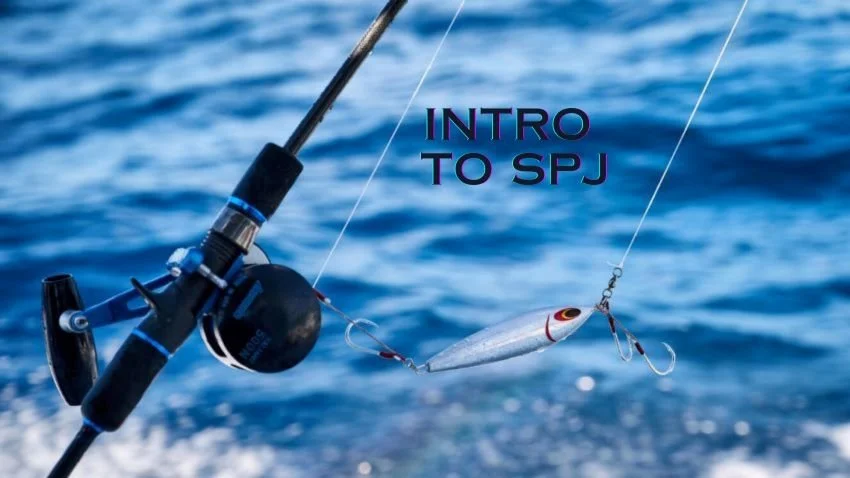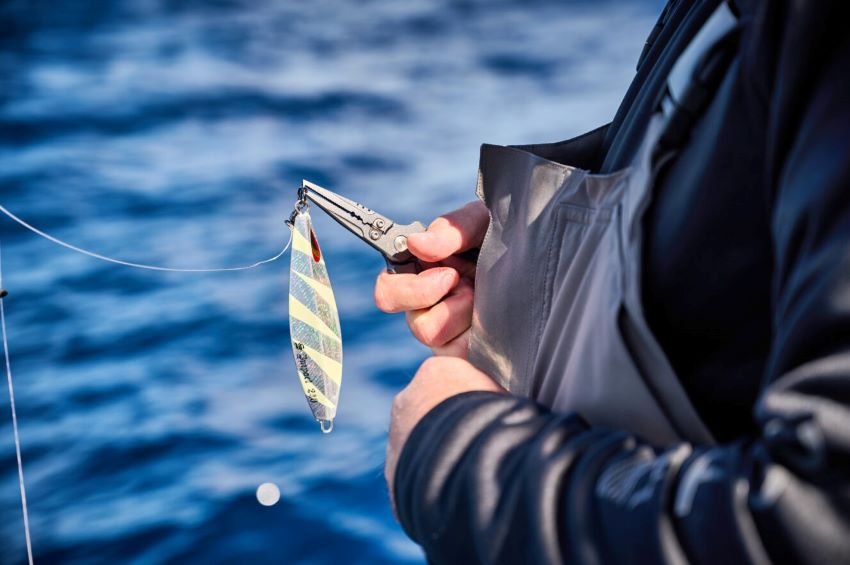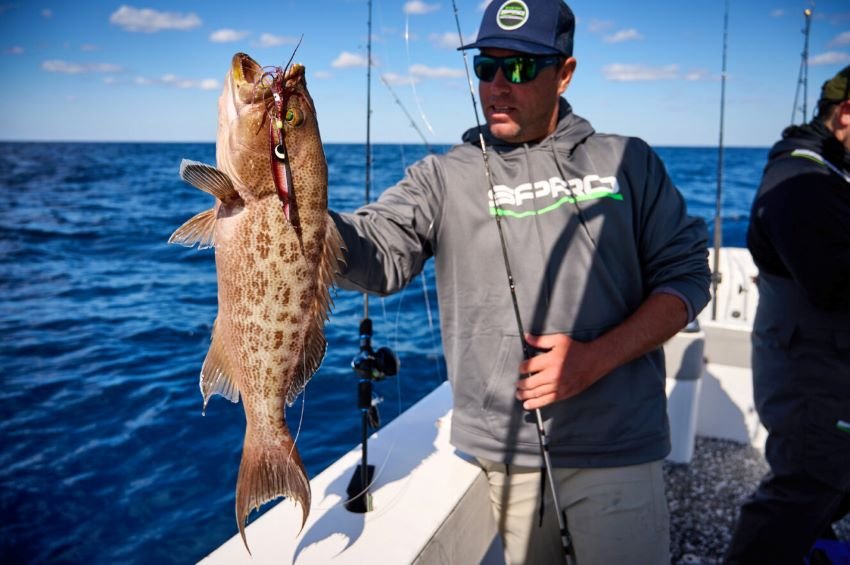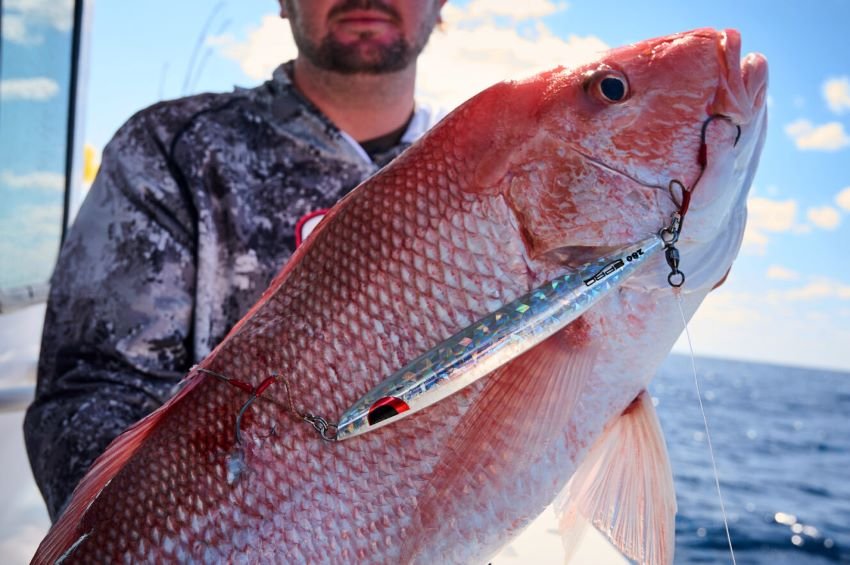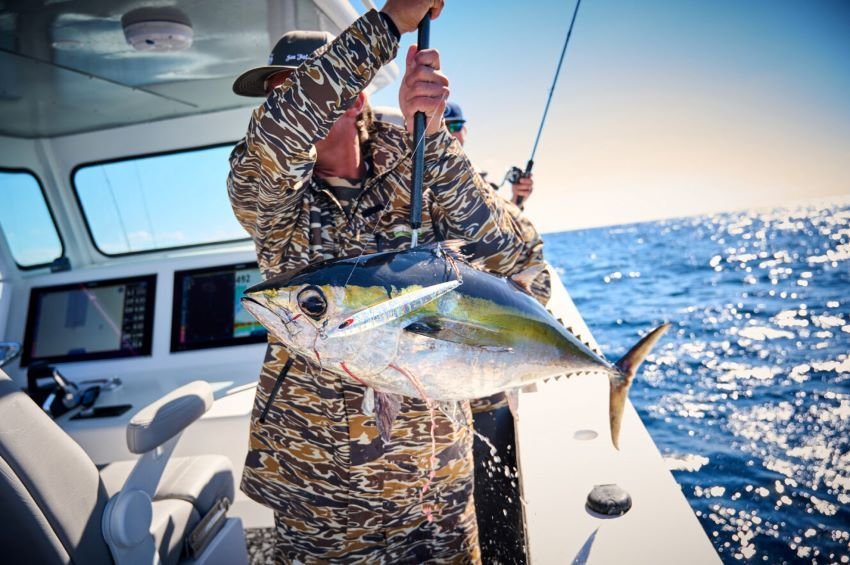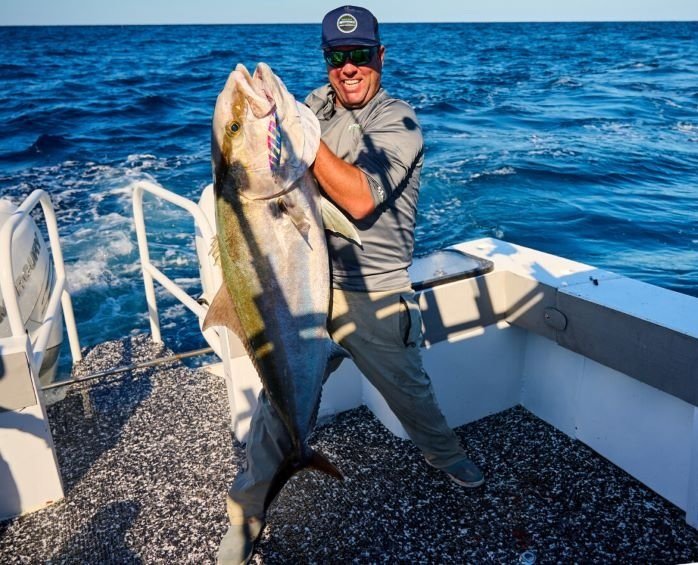What is Slow Pitch Jigging?
Through our three (soon to be four) trips to Panama to chase multiple inshore and offshore species, I’ve become obsessed with popping for tuna. What’s not to like? It’s the perfect mix of surface lures, big fish, explosive strikes and sashmi. But just about every time I see the word “popping” online, it’s paired with the word “jigging.” The people who are fanatical about one tend to feel the same way about the other, so I figured I’d love it, too. Then I realized that many are even more specialized, preferring what is known as “slow pitch jigging” (SPJ).
After watching some online videos about SPJ, I was still a little confused. It’s a bizarre subculture with highly specialized little rods, reels and lures. The jigs are dart and dive on the fall and are meant to imitate dying forage – they stay in the strike zone a long time and make a tempting-but-easy meal. Still, I had a lot of questions.
Fortunately, I was introduced to Kazutomo (“Kaz”) Nakamura. He works for SPRO and my good friends Mark Davis and Mike Valster told me that he’s an expert on the technique. They also happen to represent Sea Falcon, a Japan-based company that makes exquisite gear for this technique.
HPFC: What is slow pitch jigging?
KAZ: Slow pitch jigging is fishing the jig with a stop and go action and the fish bites on the fall. It’s different from traditional high-speed jigging where the fish bites the jig on the way up the water column.
HPFC: Where was it developed?
KAZ: In Japan by Norihiro Sato
HPFC: What is the basic technique?
KAZ: The fish bites the jig on the fall while the jig is fluttering down to the bottom.
HPFC: Why is it so effective?
KAZ: It makes the jig look like a wounded baitfish and attracts inactive fish.
HPFC: What design elements make the jigs work well?
KAZ: There are many elements and actions that make the jigs work. The fall speed, weight balance, slide width, pulling resistance, and pause time make the jigs have different actions.
HPFC: What distinguishes the Sea Falcon products from the competition?
KAZ: Sea Falcon products are made using unique materials and manufacturing processes at the Bluing Hearts craft center in Hamamatsu, Shizuoka Prefecture in central Japan. All processes, from planning and development to manufacturing are carried out in- house to achieve high Japanese quality, continually providing innovative products to the world of lure fishing.
HPFC: Where around the world is the technique most popular, and is it growing in the United States?
KAZ: It is very popular in Japan, Southeast Asia, and Australia. The market is growing in the US.
HPFC: How, when and why did Sea Falcon enter the US market?
KAZ: SPRO started distributing Sea Falcon in 2020. The US is the biggest fishing market in the world and it’s an untapped fishing resource.
HPFC: What are some places in the US where this technique works especially well, or where there are SPJ communities?
KAZ: Just about anywhere that has a saltwater fishery. If the water is somewhat clear then slow pitch jigging works well. Florida, California, and the Northeast seem to have the largest communities.
HPFC: For someone starting out, what is the best way to learn?
KAZ: Watch videos online. There are many outlets that explain slow pitch jigging
HPFC: What are some of your favorite places in both the US and in other countries for this technique?
KAZ: Florida, Louisiana and New York.
HPFC: What are some places you’d still like to try it?
KAZ: California, Texas and North Carolina.
HPFC: What species have you caught with it?
KAZ: Over 35 species of fish -- too many to list, Groupers, jacks, snappers, tunas, scup, sea bass, tilefish, cod.
HPFC: What species would you still like to try it on?
KAZ: Bluefin Tuna and stripers
HPFC: Sea Falcon also makes poppers and pencil baits. What distinguishes yours from the competitions?
KAZ: They are handmade Plugs with unique actions.
HPFC: What are Sea Falcon’s plans for the future?
KAZ: Micro Jigs for micro jigging and freshwater fishing.
I can’t wait to find a place to try this out – maybe this May in Panama or perhaps Hanna and I will make a dedicated domestic trip. In the meantime, check out some of the following articles to learn more:

